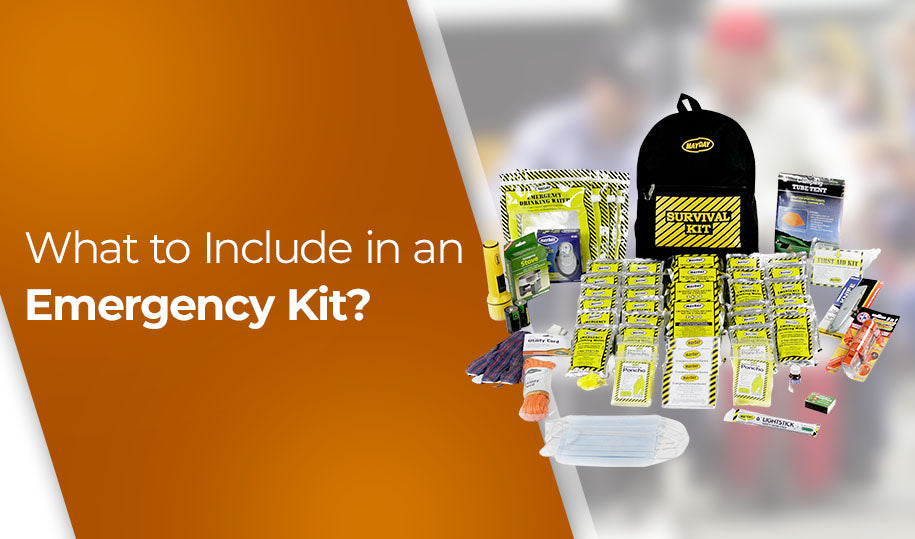In our increasingly unpredictable world, being prepared for unexpected situations is paramount. Whether it's a natural disaster, power outage, or any other emergency, having a well-stocked emergency kit can make a significant difference in ensuring your safety and well-being.
Building Your Emergency Kit: A Guide to Preparedness
When disaster strikes, the first few days are crucial for survival. Being self-sufficient during this critical time requires having essential supplies such as food, water, and other necessities readily available. That's where a well-prepared disaster supplies kit comes into play – a collection of fundamental items that your household might need in an emergency.
Ensuring your emergency kit is fully stocked is vital. Take a glance at the checklist below, and don't hesitate to download a printable version for your convenience. Remember, your family might have unique needs, whether it's supplies for pets, seniors, or infants.
Essential Items for Your Emergency Kit
As you embark on the journey of building your emergency kit, imagine it as a carefully curated arsenal designed to ensure the well-being of your family during unexpected challenges. Here's your blueprint for a comprehensive emergency supply list:
Strategic Packing
Begin by carefully organizing your items in airtight plastic bags. Next, house your entire disaster supplies kit in easily portable containers such as plastic bins or a durable duffel bag.
Survival Essentials
A well-rounded emergency supply kit includes the following must-have items:
1. Water - Dedicate at least one gallon per person per day for drinking and sanitation needs. Adequate hydration is a cornerstone of survival.

2. Non-Perishable Food - Equip yourself with non-perishable sustenance that will last several days, providing necessary nourishment during challenging times.
3. Battery-Powered or Hand-Crank Radio - Stay informed and connected with a reliable radio that allows you to receive crucial updates. A NOAA Weather Radio with tone alert is a wise addition.

4. Flashlight - Illuminate the path ahead and navigate darkness confidently with a dependable flashlight at your disposal.
5. First Aid Kit - A well-equipped first aid kit is indispensable. It equips you to address minor injuries and maintain health.
6. Extra Batteries - Power up your devices and tools with a reserve of extra batteries, ensuring you're never left in the dark.

7. Whistle - Use a whistle to signal for help, a simple yet effective way to communicate during emergencies.
8. Dust Mask - Safeguard your respiratory health by using a dust mask to filter out potentially contaminated air.
9. Plastic Sheeting and Duct Tape - Be prepared to create temporary shelter by having plastic sheeting and duct tape at your disposal.
10. Sanitation Essentials - Maintain personal hygiene with moist towelettes, garbage bags, and plastic ties. These are essential for staying clean and minimizing health risks.
11. Tools for Utility Control - Pack a wrench or pliers to turn off utilities if necessary, enhancing safety during critical moments.
12. Manual Can Opener - Ensure access to your non-perishable food by including a manual can opener.

13. Local Maps - Knowledge is power. Local maps provide guidance and aid in navigation during emergencies.

14. Communication Hub - Keep a charged cell phone with chargers and a backup battery to stay connected and informed.

Your emergency kit is more than a collection of items; it's a manifestation of your commitment to safeguarding your family. By thoughtfully assembling these essentials, you're crafting a shield of preparedness that empowers you to face the unexpected with confidence.
Personalizing Your Preparedness: Tailoring Your Emergency Kit to Individual Needs
In the world of emergency preparedness, one size doesn't fit all. Your emergency supply kit should reflect the unique requirements of your family. Consider the following items to personalize your kit:
1. Hygiene and Health - Pack soap, hand sanitizer, and disinfecting wipes to ensure cleanliness and well-being during emergencies.
2. Medication Management - Don't forget to include daily prescription medications and any specific meds for individual conditions. Also, add non-prescription medications like pain relievers, anti-diarrhea meds, and antacids.

3. Visual Clarity - If needed, pack prescription eyeglasses and contact lens solutions for maintaining optimal vision.

4. Infant Essentials - Cater to the needs of infants with formula, bottles, diapers, wipes, and rash cream.

5. Pet Preparedness - Ensure your pets are cared for by including pet food and extra water.
6. Financial Backup - Keep cash or traveler's checks on hand for situations where digital transactions might be unavailable.

7. Document Protection - Safeguard important family documents by saving electronic copies in a waterproof container.

8. Comfort and Rest - Add a sleeping bag or warm blanket for each person, along with suitable clothing and sturdy shoes.

9. Fire Safety - Include a fire extinguisher and waterproof matches to manage fire-related situations.

10. Personal Care - Prioritize personal hygiene with feminine supplies and essential personal care items.

11. Dining Essentials and Creativity - Pack utensils, plates, cups, along with paper and pencil for practical use and engaging activities.

12. Child's Play - Keep young ones occupied and spirits high with entertainment items like books, games, and puzzles.

By personalizing your emergency kit, you're ensuring the well-being and comfort of your family in the face of unexpected events. This tailored approach to preparedness demonstrates your dedication to their safety and security.




















